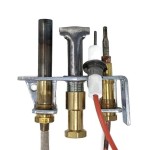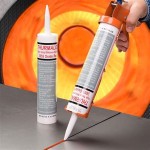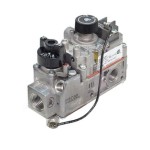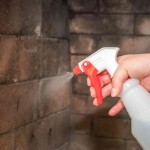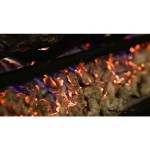LPG Gas Fireplaces: A Comprehensive Guide
Liquefied Petroleum Gas (LPG) fireplaces offer a flexible and convenient heating solution for homes and businesses. They provide the ambiance and warmth of a traditional wood-burning fireplace without the mess, labor, and environmental concerns associated with solid fuel. Understanding the intricacies of LPG gas fireplaces, including their types, installation requirements, safety considerations, and maintenance procedures, is crucial for making informed decisions and ensuring optimal performance.
LPG, a mixture of propane and butane, is a readily available and relatively clean-burning fuel source. Its primary advantage over natural gas lies in its portability and independence from a fixed pipeline infrastructure. This makes LPG gas fireplaces suitable for locations where natural gas is unavailable or difficult to access. The following sections will explore various aspects of LPG gas fireplaces, providing a detailed overview for potential users and industry professionals alike.
Key Advantages of LPG Gas Fireplaces
Several factors contribute to the popularity of LPG gas fireplaces. Their ease of use is a major draw. Unlike wood-burning fireplaces, which require manual loading and tending, gas fireplaces can be ignited with the flick of a switch or the press of a button. Many models come equipped with remote controls, allowing users to adjust the flame height and heat output from the comfort of their seats.
Another significant advantage is their efficiency. Gas fireplaces generally convert a higher percentage of fuel into usable heat compared to traditional wood-burning fireplaces. This translates into lower heating costs and reduced environmental impact. Moreover, they produce minimal ash or soot, eliminating the need for frequent cleaning and maintenance associated with solid fuel fireplaces.
Safety is also a paramount consideration. Modern LPG gas fireplaces are designed with multiple safety features, including oxygen depletion sensors (ODS) and automatic shut-off valves. These mechanisms prevent the buildup of carbon monoxide and mitigate the risk of gas leaks. When properly installed and maintained, gas fireplaces pose a significantly lower fire risk compared to wood-burning counterparts.
Finally, the aesthetic appeal of LPG gas fireplaces cannot be overlooked. They are available in a wide range of styles and designs, from traditional log sets to contemporary glass enclosures. This allows homeowners to select a fireplace that complements their existing décor and creates a visually appealing focal point in their living space.
Types of LPG Gas Fireplaces
LPG gas fireplaces can be broadly categorized based on their installation type and venting system. Vent-free fireplaces, as the name suggests, do not require a chimney or external vent. They operate by burning gas very efficiently and releasing the combustion products directly into the room. While vent-free models offer installation flexibility, they require careful consideration of room size and ventilation to prevent the buildup of harmful gases. Local regulations may restrict or prohibit the use of vent-free fireplaces in certain areas.
Vented fireplaces, on the other hand, require a chimney or vent to exhaust combustion gases outdoors. These models are generally considered safer than vent-free fireplaces, as they eliminate the risk of indoor air pollution. Vented fireplaces can be further classified into direct-vent and natural-vent models. Direct-vent fireplaces draw combustion air from outside the home and vent exhaust gases directly outdoors through a sealed system. This design enhances efficiency and prevents backdrafting. Natural-vent fireplaces, also known as B-vent fireplaces, use the natural convection of hot gases to vent exhaust through a chimney. They are typically less efficient than direct-vent models.
Insert fireplaces are designed to be installed within an existing masonry fireplace. They offer a cost-effective way to convert a traditional wood-burning fireplace into a gas-fueled appliance. Inserts typically feature a sealed firebox and a direct-vent system, maximizing efficiency and safety. They can significantly improve the heating performance of an existing fireplace while reducing emissions and maintenance requirements.
Finally, freestanding gas fireplaces offer a versatile heating solution that can be placed virtually anywhere in a room. They resemble wood-burning stoves and often feature a realistic log set and flame pattern. Freestanding fireplaces are typically vented and require a flue pipe to exhaust combustion gases outdoors. They can be a stylish and efficient alternative to traditional heating systems.
Installation and Safety Considerations
The installation of an LPG gas fireplace is a complex process that should be performed by a qualified and licensed professional. Proper installation is crucial for ensuring safe and efficient operation. The installer will need to connect the fireplace to an LPG gas supply, install the venting system, and verify that all connections are secure and leak-free.
Prior to installation, it is essential to consult local building codes and regulations to ensure compliance. Many jurisdictions have specific requirements for gas fireplace installations, including venting specifications, gas line sizing, and safety clearances. Failure to comply with these regulations can result in fines and safety hazards.
The gas supply line must be properly sized to deliver an adequate amount of gas to the fireplace. An undersized gas line can result in poor flame quality and reduced heat output. The gas pressure regulator must be set to the correct pressure to ensure optimal performance. Over-pressurization can damage the fireplace and create a safety hazard.
The venting system must be installed according to the manufacturer's instructions and local building codes. Improper venting can lead to backdrafting, which can introduce harmful gases into the home. The vent should be properly sealed and insulated to prevent leaks and condensation. Carbon monoxide detectors should be installed in the vicinity of the fireplace to provide early warning of any potential carbon monoxide buildup.
Regular maintenance is essential for ensuring the safe and efficient operation of an LPG gas fireplace. The fireplace should be inspected annually by a qualified technician. The technician will check for gas leaks, inspect the venting system, clean the burner assembly, and verify the proper operation of all safety features. Any damaged or worn parts should be replaced promptly.
Homeowners should also perform some basic maintenance tasks, such as cleaning the glass enclosure and removing any debris from the burner area. The glass should be cleaned with a non-abrasive cleaner to avoid scratching the surface. The burner area should be kept free of dust, lint, and other debris that could obstruct the flame or interfere with combustion.
It is crucial to educate all household members on the proper operation and safety procedures for the gas fireplace. Children should be kept away from the fireplace when it is in operation. Never store flammable materials near the fireplace. In the event of a gas leak, evacuate the premises immediately and contact the gas company or fire department.
Fuel Efficiency and Environmental Impact
The fuel efficiency of an LPG gas fireplace is a significant factor to consider when evaluating heating options. Gas fireplaces generally offer higher efficiency compared to traditional wood-burning fireplaces. The efficiency rating of a gas fireplace indicates the percentage of fuel that is converted into usable heat. Higher efficiency ratings translate into lower heating costs and reduced energy consumption.
Several factors can affect the fuel efficiency of a gas fireplace, including the type of venting system, the insulation level, and the maintenance practices. Direct-vent fireplaces are typically more efficient than natural-vent fireplaces, as they draw combustion air from outside the home and prevent heat loss through the chimney. Proper insulation can help to minimize heat loss and improve overall efficiency. Regular maintenance, such as cleaning the burner assembly and checking for gas leaks, can also contribute to optimal fuel efficiency.
The environmental impact of LPG gas fireplaces is another important consideration. While LPG is a fossil fuel, it burns cleaner than wood, producing fewer emissions of particulate matter and greenhouse gases. Compared to wood-burning fireplaces, gas fireplaces emit significantly lower levels of smoke, soot, and carbon monoxide. This reduces air pollution and improves indoor air quality.
However, it is important to note that LPG is still a non-renewable resource. The extraction, processing, and transportation of LPG can have environmental impacts. To minimize the environmental footprint of LPG gas fireplaces, it is advisable to choose energy-efficient models and practice responsible fuel consumption. Homeowners can also consider offsetting their carbon emissions by investing in renewable energy projects or planting trees.
Furthermore, the use of programmable thermostats can help to optimize energy consumption and reduce heating costs. A programmable thermostat allows users to set different temperature schedules for different times of the day or days of the week. This can prevent the fireplace from running unnecessarily when no one is home or when the temperature is already comfortable.

Lpg Gas Fires What You Need To Know Direct Fireplaces

Flavel Emberglow Lpg Gas Fire Stoves

Fire Sense Taylor 48 In X 24 5 Oval Aluminum Lpg Pit Kit Antique Broe 63222 The Home Depot

Fire Sense Cartney 32 In W X L Outdoor Square Aluminum Lpg Pit 63694 The Home Depot

Large Gas Fire 2m Long 2 3 Sided Glass Corner Side Lpg Natural Left Right Stove

Patio Propane Fire Column Gas Fireplace Stone Look Outdoor Heater Beige Gray

Fire Sense Perissa Woven Round Cast Aluminum Lpg Gas Pit 62208

Heatmaxx 42 In 60 000btu Fire Pit Propane Gas Table Rectangular Tabletop Srgf11666 The Home Depot

Buy Lpg Living Flame Inset Gas Fires

Fire Sense Yorke 42 In X 24 5 Square Aluminum Lpg Gas Pit Kit Antique Broe 63226 The Home Depot

